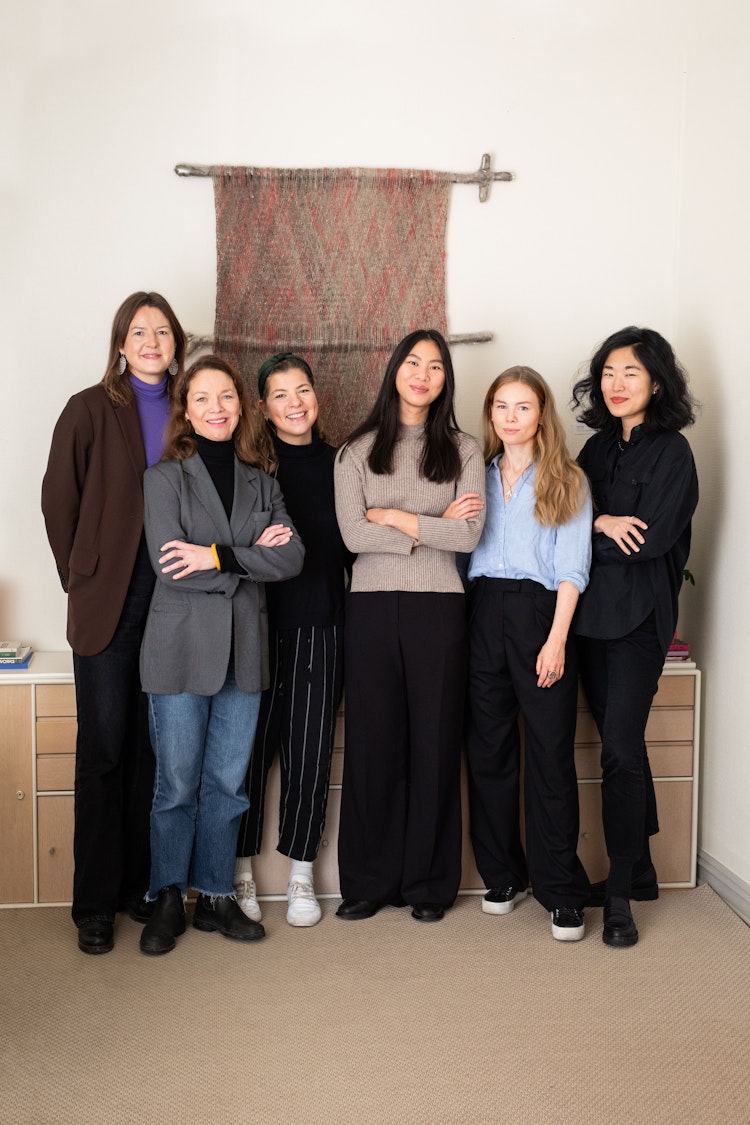

the Norwegian Crafts team
It is with great pleasure that we release this latest issue of The Vessel, titled Norwegian Crafts Magazine Revisited, on the occasion of Norwegian Crafts’ 10th anniversary. Throughout our decade-long existence we have focused a lot of our energy and resources on telling stories about crafts – through publications, different iterations of Norwegian Crafts Magazine,1 and since last year, through The Vessel.
When we founded The Vessel, it was because we saw the need for a dedicated digital space for artists, curators, gallerists, academics, and craft enthusiasts to immerse themselves in craft art and duodji, and for us to showcase the many highly skilled and talented craft artists working in Norway today. Over time, The Vessel and its content will grow and become a useful tool for learning about craft from different perspectives. With Norwegian Crafts Magazine Revisited, we’re more than doubling the amount of content available on the site.

It has been fantastic for us at Norwegian Crafts to revisit the great content we have commissioned and produced throughout the years. Looking through our archive, we see a diverse craft field with a breadth of materials and, in particular, an impressive range of how artists and duojárat2 push materials to their full potential and research to develop their own processes to get the results they want.
In this issue of The Vessel, we present a selection of 45 interviews and articles on craft written by 32 contributors, all of which have been previously published on our website. Some have also been part of exhibition catalogues or printed as part of our collaborations with other magazines. It is great to see the list of international contributors that we’ve invited to write about Norwegian or Norway-based artists, including Jessica Hemmings (UK and Sweden), matt lambert (US), Maria Ragnestam (Sweden), Zoe Black (Aotearoa New Zealand), and Namita Wiggers (USA).
From an extensive list of more than 130 articles, interviews, and notes published throughout the decade, we have primarily selected pieces that showcase artists and duojárat from Norway and Sápmi, along with a few other articles that give an overall insight into the contemporary craft world. Through this issue you will get insight into the artistic practice of established artists like Torbjørn Kvasbø, Brit Fuglevaag, Perisak Juuso, and Tone Vigeland – whom we can say are doyens of craft – as well as more recent additions to the craft field, such as artists like Pearla Pigao, Erika Stöckel, and Sigve Knutson. In total, we present more than 30 in-depth interviews with and articles about artists, all of whom can be researched through The Vessel’s Artists section.
We have also included a couple of pieces highlighting historically significant artists in the Norwegian craft scene. Back in 2012, we commissioned a piece on the Swedish-Norwegian textile artist Hannah Ryggen (1894–1970). In the essay Hannah Ryggen's Popularity, Line Ulekleiv writes about Ryggen’s political tapestries and how relevant her practice still is in contemporary society, and the reasons behind her rising popularity, which we now know increased enormously after 2012. Another article, from 2019, written by textile artist Runa Boger, presents the effect the Polish artist Magdalena Abakanowicz’s exhibitions in Norway had on the Norwegian contemporary craft field in the 60s, and its continued influence today.
Summing up a decade’s worth of craft theory development is no mean feat, but if anyone is capable of adding context and structure to the developments within the craft field that shaped our journey, it is the eminent art historian Jorunn Veiteberg, our chairwoman for the first 10 years. Her extensive knowledge about the international craft field has been of great importance to Norwegian Crafts. In her new essay written especially for this issue of The Vessel titled A Contested Concept, she writes about how Norwegian Crafts has worked strategically, with theory development as the core of our work.
In the beginning of this year Veiteberg stepped down as our chair. She is succeeded by the aptly named Kristine Wessel – curator, producer, and co-founder of Mésen. She’s written the foreword for this issue, where she gives a more detailed background into how Norwegian Crafts came to be, and how we’ve shaped our mediation and theory development through the years.
Whether you are revisiting old favourites through this issue or reading these articles for the very first time, we hope you will enjoy them as much as we have done. Most importantly, we hope they will continue to inspire craft artists, curators, and writers to dive deeper into craft, duodji, and material-based art, because we know how important these perspectives are, not just for the development of the craft field, but for our society at large. You can search the entire contents list of this issue through the tag ‘Norwegian Crafts Revisited’ or use the Discover page.
Lastly, we’d like to thank our funders, without whom we could not have published this issue of The Vessel: the Norwegian Ministry of Culture and the Ministry of Foreign Affairs, and Kunsthåndverkernes Fond (managed by the Norwegian Association for Arts and Crafts). Thank you to our graphic designers, illustrators and programmers at Bielke & Yang. And finally, thank you to all the artists, writers, translators, copyeditors, photographers, and other contributors who’ve been involved in Norwegian Crafts’ theory development from the beginning.